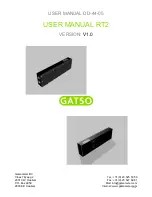
ever listened to AM or FM radio, then you already know what a band
is. In North America, the AM band is a frequency range stretching
from 530 to 1710 kilohertz; the FM band is 88-108 megahertz. A
band is a frequency range in which stations are located. To find AM or
FM stations you tune around with the tuning buttons (or the tuning
knob on an analog radio) until you find a station you like. Shortwave
is similar and the shortwave bands have names like 25 meters, 31
meters, 49 meters, etc. These are abbreviated 25m, 31m and 49m.
Just like in AM and FM radio, one simply gets into the shortwave band
and tunes around, looking for stations.
Each band represents a frequency range, as shown in the accom-
panying band chart. For example, the 19 meter shortwave band
encompasses the frequency range of about 15100 to 15600 kilohertz.
Since some radios show frequency in megahertz (mHz) and some in
kilohertz (kHz), both are shown here. Look at your radio’s tuning scale
or its digital display to determine which frequency designation it uses
in shortwave. On some shortwave radios these frequencies will look
like 15100 kHz, 15105 kHz or 15110 kHz and on other radios they
might look like 15.1 mHz, 15.105 mHz or 15.11 mHz. The exact range
of a band may be slightly different in one band chart or another and
may even vary slightly from one radio to another. This is perfectly OK.
On some radios the band names, e.g. 19 meters, are clearly marked,
on others they are not marked at all. If it is not apparent how to get
into a band on your radio, consult the owner’s manual.
SIMPLIFIED SHORTWAVE BAND CHART
The table below shows the bands used for shortwave broadcasting.
For more detailed band information enter ‘shortwave broadcast band
allocations’ at an Internet search site.
16 INTRODUCTION TO SHORTWAVE continued
31
G5
OWNER’S MANUAL
G5
OWNER’S MANUAL











































